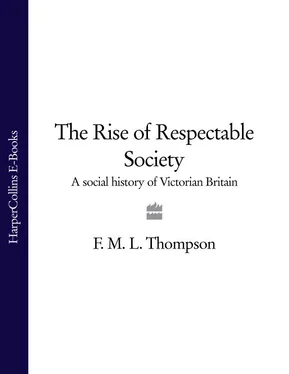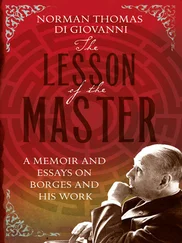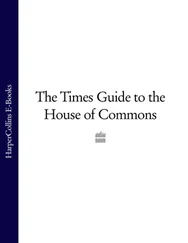If this varied and complex pattern of behaviour was the result of rational decisions by thousands of parents, and if their decisions were primarily influenced by some ingredients of their economic circumstances, then the one thread linking the great majority of these occupational groups was the extent, and timing, of their exposure to the processes of industrialization. Thus, machine technologies, large-scale organization, or factory methods, came earliest to textiles, railways, or printing; much later to furniture-and shoemaking; and not at all to building, dock, and farm work, and in the sense that coalmining remained essentially a labour-intensive industry using traditional methods, not to that industry either. Such a model cannot accommodate the exceptions, the engine drivers who were not among the early starters on family limitation, and the boilermakers who remained out of kilter with their large families; but the exceptions are not numerous. It could be that engine drivers, the cream of railway workers, felt that they could afford larger families than the rest of their industry, and that boilermakers responded in similar fashion to their high pay and status among the generality of engineering workers.
The low-scoring and high-achieving domestic servants are the apparently awkward exception to an explanation framed in terms of the influences of industrialization on family life. Domestic servants, however, have been cast in a central role in the general process of ‘modernization’, a conveniently vague concept intended to sum up the whole shift from traditional, rural and agricultural, customs and lives to modern urban living, without implying that industrialization in any narrow sense was necessarily the chief or only motor in the process. Domestic service was indeed a very important and busy highway for shifting country girls and farm girls into the big city and giving them a view from below stairs of the habits of middle-class households, and a slice of urban living on afternoons off. It is conceivable, but not probable, that female domestics, especially ladies’ maids, not only observed the results of family limitation by their employers but also learnt the secrets of the techniques from their mistresses; in this way they could have acted as an important channel for the diffusion and emulation of middle-class habits and attitudes among the generality of the working classes, particularly as they tended to marry respectable town-dwelling workingmen and not dockers, miners, or farmworkers. Given the extreme reticence of Victorian middle-class women, however, who could scarcely bring themselves to mention sex to their own daughters, it is rather absurd to imagine mistresses chatting to their maids about birth control. It would be more plausible to suppose that young female servants, almost daily faced with seduction by their employers or the sons of the house according to popular literature, were obliged to work out for themselves some sex knowledge and contraceptive methods as an essential part of job- and character-preservation.
Leaving specific experience and skills acquired on the job to one side, it is very likely that domestic service inculcated general notions of prudent and careful management, which would be applied to the conduct of their own lives when servants left to get married. A reputation for knowledgeable and competent household management, plus a nest-egg of savings, were after all commonly held to be the major attractions which domestic servants brought into the marriage market. It would not be surprising if, as wives and mothers, ex-domestic servants applied principles of prudence and domestic economy to their own childbearing. How widely ex-domestics diffused such attitudes among the working classes can only be surmised, since there are no records on which to base any conclusions about the occupations of their husbands. Most girls who were in service for some part of their lives did eventually get married, probably at least 80 per cent of them, although they tended to be slightly older at marriage than other women and this in itself would tend to have limited the number of children they had. Very few married male servants and remained in domestic service, because the openings for married couples in service were limited. Since something like one in seven or one in eight of all females over ten years old were domestic servants throughout the Victorian period, they presumably provided about the same proportion of working-class wives and mothers; and although female servants were thought to have strong predilections for marrying shopkeepers and skilled tradesmen, if only because those were the groups with whom they came into contact most in the course of their duties, it seems likely that the sheer pressure of their numbers meant that many married outside those circles. They could, therefore, have been a most powerful agency in spreading attitudes, or a ‘mentality’, in which family limitation formed a natural part, although it must be emphasized that it is far from clear that such attitudes were absorbed from their middle-class employers rather than being self-generated.
The domestic servants whose small families were recorded in the 1911 fertility census were, of course, male servants, since all the occupational information concerned husbands’ occupation, it being thought of no importance, or impossible, to seek information on the wives’ previous or continuing occupation. Male servants who married and managed to remain in service, some of them for over fifty years by the time of the 1911 census, were a somewhat special and peculiar subcategory of servants since the opportunities for their employment were very restricted. Servants such as coachmen, grooms, or gardeners were indeed frequently married men; but they normally lived away from the house in their own separate quarters, and were not ranked as indoor servants. It is the indoor male domestic servants who turned in a better family-limitation performance than the upper and middle classes, or at any rate had fewer children. The reason may well have been that these were upper servants of some distinction and special value to their employers – stewards, butlers, chefs, or specially trusted manservants – who were given the privilege of being retained after marriage. Such special male servants would tend to marry late, and would be well aware that if they wanted to keep their jobs they could not afford to have many children, since both space in the house and tolerance for nursery noise would be strictly limited. Alternatively, only those married male servants who turned out to have small families, for whatever cause, might have contrived to remain in service, the large-family men being forced out into other occupations. Either way, the male servants cannot have been important agents of ‘modernization’, and their small families were a consequence of peculiar occupational requirements rather than of the influences of industrialization or urbanization.
There was a widespread feeling among contemporary observers of the early Victorian scene, especially among critics of the factory system, that the influences of industrialization were most strongly at work among textile, particularly cotton, workers, and that they were deplorable, immoral, unnatural, and subversive of the social order. The sight of women and girls working in the mills, as well as children, was found particularly shocking and offensive, the more so when it led to a reversal of gender roles, with the man doing the housework and child-minding while the wife toiled in the factory. Friedrich Engels saw in this not just class oppression and exploitation, but the approaching end of the natural order of the sexes, the dethronement and humiliation of men. ‘One can imagine’, he wrote, ‘what righteous indignation this virtual castration calls forth amongst the workers and what reversal of all family relations results from it, while all other social relationships remain unchanged.’ Whether achieved by castration or not, it was widely believed that the millgirls produced fewer children than other women. Mill work in childhood and adolescence was held to arrest and distort physical development, impairing the fecundity of the women or making them sterile. There is no evidence that the millgirls who were young in the 1830s and 1840s were not producing perfectly normal numbers of children in the 1850s, and no reason to suppose that childless couples were any more common in Lancashire textile towns than elsewhere. Married women working in the mills were thought to raise fewer children than normal, because they worked until the final stages of pregnancy and because they returned to work within two or three weeks of childbirth, damaging their own health and leaving tiny babies to neglect and probable swift death. This, if it had been true, might not have affected the demographer’s concept of completed family size, since that measures the total number of children born alive to a couple; but it would have affected the effective family size of children surviving beyond the age of one. In any case, there was little substance for such alarmist beliefs. Married women formed a small proportion of the female cotton workers, between a fifth and a quarter, and the great majority of these factory wives were either those who had not yet had any children or those whose children had grown up. The normal situation in the mill towns of the 1840s and 1850s seems to have been that only one tenth or so of all the wives went out to work in the mills; that most mothers with babies and young children stayed at home looking after them; and that the small minority of mothers with small children who did continue to work in the mills made adequate arrangements for baby-minding and child care, preferably with neighbouring kinfolk.
Читать дальше












